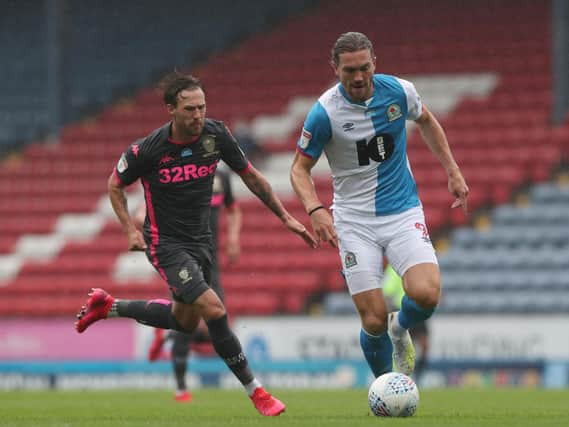Fates of Barry Douglas and Gaetano Berardi add to Leeds United's long history of cruelty to full-backs - Daniel Chapman


Barry goes, and Berra stays, and it’s time to think about two things: Leeds United’s cruelty to full-backs, and players who don’t play.
Gaetano Berardi was a full-back, before Marcelo Bielsa turned him into a sort of maniac Franco Baresi. His knee ligament injury, coming at the cruelest time in a pointless match and denying him the Premier League games he’d worked six seasons for, was not an unusual punishment for a Peacock of the defensive wing.
Advertisement
Hide AdAdvertisement
Hide AdPaul Reaney missed an FA Cup final and the World Cup finals in Mexico, in 1970, after breaking his leg for Leeds at West Ham. Leeds and Reaney had played against Celtic at Hampden Park in the European Cup semi-final the night before, but try telling the Football League that.
In photo after photo of Reaney watching the games on television with his leg in plaster, his expression perfected glum. Terry Cooper missed the victorious FA Cup final in 1972 – and 20 months of football – with a broken leg of his own.
In 1991, when Howard Wilkinson signed Tony Dorigo, it was taking a significant risk to put on the number three shirt that in one year had struck down Glynn Snodin, Mike Whitlow, Chris Kamara, Jim Beglin and Peter Haddock, the latter two forced into retirement by their injuries.
Dorigo was unscathed at left-back but the right-back suffered. Mel Sterland hurt his ankle and missed the title run-in, and I would argue the 1992/93 drop from first to 17th had more to do with his absence than the backpass rule or selling Eric Cantona. Sterland, too, had to retire. Eventually Gary Kelly was found to take over his cannonball runs from goal line to goal line, and he played and played and played until his shins fell apart.
Advertisement
Hide AdAdvertisement
Hide AdPretty much the same happened to Sam Byram, his teenage body not responding well to a year of relentless Warnocking. Berardi’s usual trouble was red cards, until fate got him by the knee in July. As for Barry Douglas, the full-back curse kept chipping away at him, knock by knock, denying him the chance to show what a good player he is. He was excellent for Wolves; he tried his hardest to be excellent for Leeds.
That was enough to earn him a glowing reference from Victor Orta, who wrote an open letter to Bazzdogg that carried in it the respect of all the squad and staff.
In terms of appearances, goals and assists, Douglas didn’t make the impact he wanted, and that will be Berardi’s burden this coming season.
But, while fans judge players on the 90 minutes we pay random broadcasters £14.95 to watch, that hour and a half is only a tiny percentage of the time professional footballers spend being professional footballers.
Advertisement
Hide AdAdvertisement
Hide AdI once asked Gordon Strachan about a particular free-kick Mel Sterland scored, but he waved my question away. Mel did that a hundred times a week in training.
The one I’d seen, to Gordon, wasn’t special enough to stand in his memory. I also asked Gordon about Dylan Kerr, who he certainly did remember, although many fans do not. Kerr was either another victim of the full-back curse, playing only 13 times in five years, or the luckiest so-and-so in Leeds, for getting his hands on the League Championship trophy in May 1992.
Kerr was unique among the players who strode out at Elland Road to collect the cup because he hadn’t played a single minute for the team that season. But Howard Wilkinson said he deserved a medal anyway. Since 1988, Kerr had been in every training session, he’d been ready for every match, he’d travelled on the bus as part of every squad.
He’d captained the reserves and looked after Cantona when he’d arrived. He’d worked as hard as anybody. But Dorigo was the left-back and the rules only allowed two on the bench. So Kerr didn’t play a minute.
Advertisement
Hide AdAdvertisement
Hide AdTo Wilko and the squad that didn’t matter because between the games of football there is a job to do and Kerr had done the work. And in a job where the social dynamics are so peculiar and so important, the way Kerr went about his work was as important to the team as any other contribution. That’s the same impact Douglas had in his time at Leeds, and the impact Berardi will have this season. Imagine sharing a gym with Berra this winter, as he wages war on his own knee, and even thinking for a second you could slack off in his presence.
“I want to have a big part in the team,” said Berardi on Friday, “playing or not playing. At the moment I’m doing my job in a different way and I think the team know this.”
And the team know he’ll do his job as well as any of them.